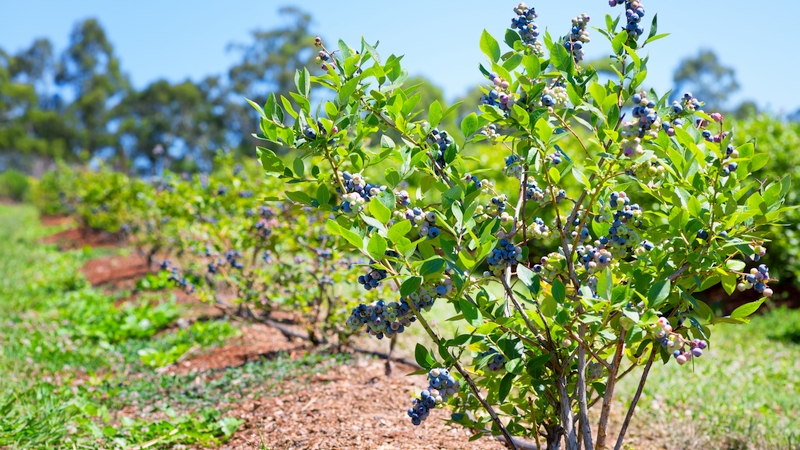What Happens When You Number Crunch Nut Crop Prices
Growers of the nation’s three highest-value tree nut crops have seen prices buffeted in recent years by numerous factors. But while retaliatory tariffs from China — not to mention this year’s pandemic — attracted the headlines, more traditional factors such as record-breaking crop sizes have had as much or more influence, and that will likely continue.
That assessment comes from Roland Fumasi, Ph.D., North American Regional Head, RaboResearch Food & Agribusiness. For example, spring 2020 predictions for another record-breaking almond crop had more of an effect than the onset of COVID-19, he said, emphasizing that he’s not minimizing the considerable effects of the pandemic.
“It caused logistical disruptions, as well as macroeconomic issues — primarily lower demand,” he says.
The retaliatory tariffs by China are also certainly having an impact. Each of the crops had a 40% tariff imposed in 2018, followed by an additional 10% in 2019, and that was on top of the base Most Favored Nation tariff a country charges under World Trade Organization rules.
The total tariff for each crop is now 60% for almonds, 55% for pistachios, and 75% for in-shell walnuts, 70% for shelled. Walnuts have traditionally been taxed at a higher rate because, unlike the other two crops, the Chinese are a major producer of walnuts.
ALMONDS
Even after the imposition of the tariffs, almond prices in the fall of 2019 were still approaching $3 a pound, Fumasi says, though he adds that it should be kept in mind that pricing on tree nuts is not very transparent. That 2019 price was not as high as the blend price — the average of all varieties and all sizes — in the 2014-15 marketing year of $4 a pound, but not nearly as low as what was to come.
Every month that went by after the 2019 harvest, it seemed more apparent the crop would be much larger than the USDA forecast, causing the price to weaken.
“At the beginning of this year, by January, there was a lot of visibility into the true crop size, and prices started to fall even more,” he says. “Then a month later, the COVID-19 news came out, followed in May by the (record 3-billion-pound) USDA estimate for the 2020 crop. We also had the best bloom for almonds that I’ve seen in my life — it was ideal — that was the last leg that drove prices down more.”
Add it all up, and over this past summer, prices declined below $1.50 per pound. The last time the price got that low was 2008.
But since hitting that low, prices have largely stabilized, and the first shipments of the marketing year have been robust, he says, setting a September record. However, this is on the back of low prices, leading Fumasi to give growers a word of advice.
“One take-home message is that, given the downward price trend, this is a good time to retire almond acreage that has less-than-desired-yield for your growing region,” he says. “Scrapping underperforming acreage is likely prudent.”
WALNUTS
In 2013, walnut prices hit an all-time record high of $3,710 a ton, the industry metric, for the in-shell price to the grower, or $1.85 a pound. That fact seems to have had ramifications all the way up to today.
“There were a lot of walnut plantings right around 2014 through ’17,” Fumasi says. “Driven by high prices, growers were doing more planting, and those trees are coming into production.”
That’s one reason for the record crop expected this year — 19% larger than the 2019 crop, according to USDA. The bigger crops have brought down walnut prices, and now the estimate for the 2020 blend price is 75 cents per pound.
However, on the bright side, total exports for the first month of this marketing year are up, oddly enough, exactly as much as the crop size, 19%.
China is not buying a lot of walnuts — even though they can grow them, many Chinese prefer higher-quality American walnuts, and they remain an important customer. But Europe is the top customer, Fumasi says, and they have picked up the pace.
“So far exports are robust this year, albeit on lower prices,” he says. “Growers need that increase because of the expected size of the crop.”
PISTACHIOS
Pistachio growers will also see a record crop this year, expecting to top 1 billion pounds for the first time. But record crops aren’t as difficult in pistachios because they’re distinctly alternately bearing, and with an “off” year the previous year, their stocks coming into 2020 were not nearly as large as they might be.
“That’s why despite alternate bearing, prices are generally staying relatively stable,” Fumasi says, adding that a $2.30 to $2.50 total return to grower per pound is what his team expects this season. “So far, in the midst of record crops, our trade issues, and COVID, pistachios seem to be faring better than walnuts and almonds in terms of pricing stability.”










